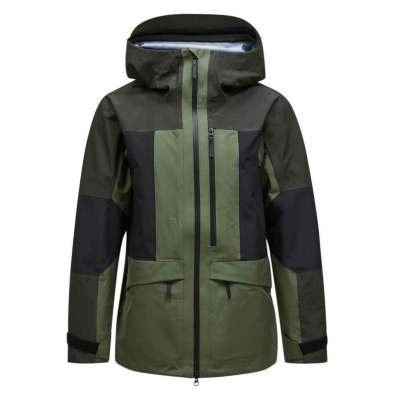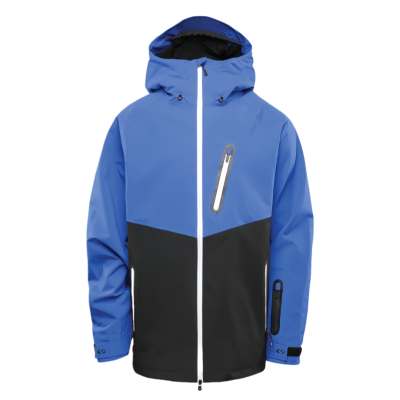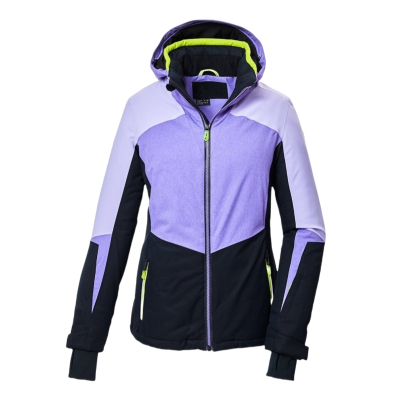6 Best Hunting Clothing Brands: A Comprehensive Guide for 2025
As hunting continues to grow around the world, the demand for high-quality hunting clothing has reached new heights. Today's hunters are looking for clothing that provides advanced camouflage, durability, weather resistance and comfort in every terrain and season. From traditional hunting jackets to high-tech performance suits, the right gear can make a real difference on the field. In this guide, we highlight six top hunting apparel brands in 2025 that set the standard for innovation, functionality, and durability.
1. what defines the best hunting clothing brand
Before diving into specific brands, it's helpful to understand the key performance, quality, and market criteria that differentiate the best hunting apparel manufacturers and brands. based on industry analysis:
l Jackets (and outerwear extension systems) for hunting must provide high camouflage/concealment efficiency (e.g. 80-90%).
l Reliable waterproofing (e.g. 10,000-20,000 mm per ISO 811) and strong breathability (e.g. 8,000-15,000 g/m²/24 hours per ASTM E96).
l Durability (wear resistance, strong seams) and mobility (articulated cuts, ergonomic design) are also key.
l additional market needs: sustainability (recycled materials), OEM/ODM flexibility, brand differentiation through camouflage patterns or odor control.
2. The 6 Best Hunting Apparel Brands for 2025
With these criteria in mind, here are six brands that tick many of the square criteria for 2025.
2.1 Mark 1: Sitka Equipment
l based in Bozeman, Montana (USA).
l Known for premium big game hunting apparel, it uses advanced camouflage (optifada) designed for specific terrain and game.
l Example specification: high waterproofing, high breathability.
l Why it stands out: High-end performance, strong reputation among serious hunters, proven improvements in concealment.
l What to look for/use: If you're targeting the premium segment of hunting apparel—mountain hunts, long-sit hunts, cold-weather gear—Sitka gear is the benchmark. It makes sense for a manufacturer or marketer to match or compare its specifications (waterproofing, breathability, materials).
2.2 Mark 2: Harkila
l Based in Vedbak, Denmark. Founded in 1985.
l European style hunting outdoor clothing: rugged construction, often for harsh conditions (moose, mountains).
l Why it stands out: Premium segment in Europe, strong craftsmanship, very durable. This brings a different regional sensibility than American brands.
l What to look for/use: If you're sourcing or designing hunting clothing for European markets (or in heavy-duty conditions), Härkila offers a model with highly specific construction, strong insulation, and durability. Offers here may command higher price points.
2.3 Mark 3: Under Armor (Hunting Line)
l while under the main umbrella of sportswear under armor has penetrated into hunting/camouflage clothing.
l Example of product specifications: camouflage jacket with cold equipment, reaper line with odor control technology.
l Why it stands out: Brand recognition, crossover appeal (hunting for sportswear), and technology features like scent control that resonate with modern hunters.
l What to watch/apply: For apparel manufacturers and marketers observing the intersection of hunting apparel and the mainstream activewear markets, Under Armour's approach is instructive. Consider how a "performance hunting line" can borrow technologies from sportswear segments (odor control, mobility fabrics) while maintaining a camouflage/hunting identity.
2.4 Brand 4: Cryptek
l Headquartered in Eagle, Idaho, USA, it was founded in 2010.
l Tactical style hunting clothing with unique camouflage (e.g. Cryptek Highlands, Obscura).
l Why it stands out: Niche positioning between tactical/military aesthetics and hunting; strong for younger or style-conscious hunters.
l What to look for/apply: If your production/marketing focus includes hybrid segments (hunting, tactical/outdoor), Kryptek offers a viable model. Innovations in camouflage patterns and targeted niches (e.g., bowhunters, mountain stalkers) can differentiate.
2.5 Brand 5: First Light
l Based in Ketchum, Idaho, USA. Founded in 2007.
l Specialty: Lightweight, technical hunting clothing with advanced materials.
l Why it stands out: Focus on portability, lightweight systems, appeal to backcountry hunting where weight and movement matter.
l What to look for/apply: Whether you're producing for mobile hunting (spot and stalk, alpine) or marketing to younger, more athletic hunters, the First Lite design philosophy is relevant. Lightweight fabrics, articulated cutouts, and specialized camouflage patterns are key differentiating factors.
2.6 Brand 6: Taian BOWINS Garment Co., Ltd. (Bowins Clothing)
l is located in Tai'an City, Shandong Province, China; founded in 2007. SHANDONG BOWINS GARMENT TECH CO., LTD. 1
l specializes in OEM/ODM production of functional and hunting clothing: hunting jackets, trousers, vests, gloves, headwear.
l They claim to have large production capacities: more than 600 professional employees, a large plant, advanced production equipment.
l Key capabilities: customization, OEM/ODM solutions, functional apparel expertise (waterproofing, breathability, camouflage, fabric technology).
l Why include them: While not a consumer brand like others, Bowins clothing is a manufacturing and solutions partner with white labels in the hunting apparel industry. For manufacturers or marketing experts who source or create their own brands, the company offers a strategic manufacturing foundation.
l What to look for/state: If you're an apparel manufacturer or brand project looking to outsource or develop a line of hunting apparel (or a private label), Bowins apparel is a worthwhile partner. Their OEM/ODM capabilities, scale of production, and focus on functional apparel meet the market's needs for high-performance hunting apparel.
3. new trends
l based on recent industry signals:
l Sustainability: Brands and manufacturers are increasingly using recycled polyester and sustainable materials; consumers and B2B buyers expect at least partially recycled content or eco-friendly practices.
l Intelligent fabrics: Features such as odor control (odor suppression), UV protection, and insect protection layers are becoming more and more prominent.
l Lightweight design: Reducing weight without sacrificing performance is critical, especially for mobile hunting styles (spot and stalk, alpine).
l Customization/OEM/ODM: For manufacturers and brand founders, the ability to service private brands or customize camouflage patterns, sizes, and lead times is a differentiator.
l Segment differentiation: Whether by terrain (mountains, brush, waterfowl), hunt type (bow, rifle, action), or style (heritage vs. tech), brands that clearly target a niche have better articulation in the market.
4. for manufacturers
l If you manufacture or purchase hunting apparel, benchmark specifications (waterproofing, breathability, wear resistance) against premium levels shown by leading brands.
l They highlight innovations in camouflage—unique patterns, terrain-specific prints, and scent-control technologies—that are important for marketing to serious hunters.
l Use sustainability credentials in your advertising messaging—consumers and retailers are increasingly asking for it.
l Consider tiered branding: one line for premium/high spec (e.g. sitka/harquila type), one line for value/heritage (e.g. filson type), and on the manufacturing side look at buying partners like Bowins apparel.
l for marketing, storytelling around terrain, conditions, hunting success (concealment, comfort) resonates more than the average "outdoor jacket".
l For OEM/ODM: Flexibility in mock-ups, fabric selection, licensing/production of camouflage patterns and delivery times will attract brands looking for customized solutions.
1. Conclusion:
In 2025, the hunting apparel category continues to evolve from purely functional outdoor apparel to a combination of high-tech performance, material innovation, sustainability and lifestyle. The brands discussed here (Sitka Gear, Garkila, Under Armor (Hunting Line), Kryptek, First Lite, Filson, and Bowins Apparel) illustrate the different strategies with which manufacturers and marketers can compete.
As a manufacturer or marketing expert specializing in hunting sports, your goal should be:
l assembly or source equipment that meets or exceeds performance benchmarks.
l clearly define your target segment (type of hunting, terrain, budget).
l use narratives (camouflage, technology, sustainability, heritage) that are relevant to your audience.
l remain nimble in customization and supply chain to respond to market changes (lightweight, smart fabrics, custom camo).
By applying the above, you will be well positioned in the hunting apparel market, which is increasingly performance-oriented, brand-conscious, and niche-focused.






